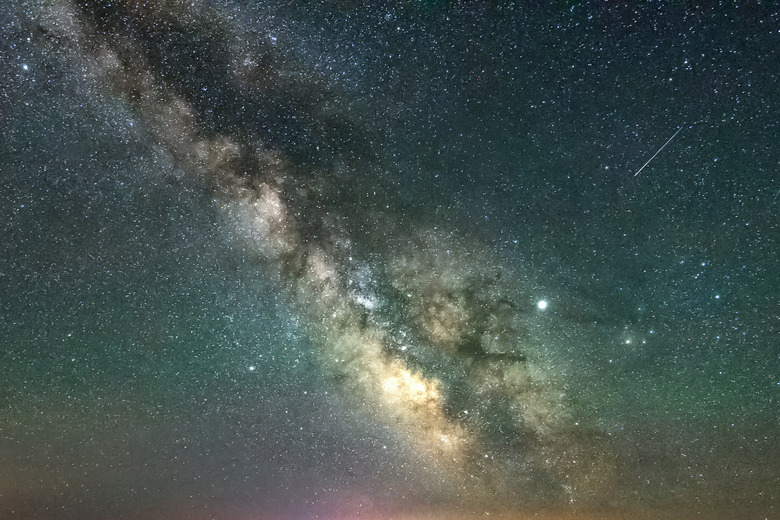4 Cool Science Experiments Done In Space
Maybe you dreamt of becoming an astronaut as a kid. But did you ever dream of being astronaut and scientist?
Yup, that's definitely a real job.
The International Space Station has been orbiting the Earth occupied by scientists and other personnel since November 2000. Its purpose is to provide a lab in zero gravity for astronauts and other scientists to run experiments, learn about space and transmit their findings back to Earth.
Over 230 individuals from 18 different countries have occupied the International Space Station with plans to continue through the year 2028. There have also been many other missions and space labs not on the International Space Station performed by various governments, countries and organizations.
Here, we're going to look at some of the coolest science experiments done in space by people at the International Space Station and researchers aboard other missions & shuttles.
1. 3-D Printing
1. 3-D Printing
Many of the experiments performed in space have a specific purpose in terms of space travel and maintaining the International Space Station.
That was the idea behind this experiment looking at how we can use 3-D printing at a space station. The company Made in Space had a 3-D printer sent to the International Space Station. There, this printer was able to use plastic recycling and waste produced by the people inhabiting the space station and recycle it into strong and functional 3-D printed fibers.
This allowed astronauts to manufacture and create spare parts, tools and other items that are necessary for the maintenance and function of the space station. This research and development allows for missions to be extended for longer as they won't be forced to return to Earth (a 250-mile trip!) to get spare parts or send another mission out with the extra parts.
They're now looking at how to recycle different materials in 3-D printing to expand applications on the space station.
2. Space Microbes
2. Space Microbes
Researchers were curious as to how bacteria and other microbes act differently in zero gravity versus on Earth. The results are as interesting as they are surprising: In 2006, researchers manning the Atlantis' STS-115 flight and the 2008 STS-123 mission saw that Salmonella bacteria is between three to seven times more virulent in space than Earth.
Why does this matter?
Well, as we continue to venture into space, plan long-haul space journeys and consider moon and/or Mars bases, this raises health concerns that we didn't previously consider for astronauts and researchers living in space ships, stations and bases.
If other microbes, and even just this type of bacteria, are all more virulent in space, we'll need to develop more protocols and safety regulations to protect people in space from getting sick hundreds of miles away from the closest hospital on Earth.
3. Protein Crystallization
3. Protein Crystallization
This experiment is one of the oldest on this list, but it had some of the most groundbreaking results. Columbia's STS-9 mission launched in 1983. This was pre-International Space Station, so they used their own laboratory called the Spacelab.
They actually performed many experiments on their 10-day mission, but perhaps the most impactful one was their protein crystallization experiment. Scientists on this mission discovered that when they cultivated their own proteins in space, they were stronger than ones made here on Earth. They also found that the crystals were both larger and more neatly ordered.
This discovery helped scientists understands how proteins form and interact with each other since the larger and more neatly ordered the crystals are, the easier it is to understand and visualize their structure and function.
This can help scientists better understand drug interactions, protein pharmaceutical development, biotechnology research and protein-related medical conditions.
4. Fire in Space
4. Fire in Space
Did you know that you can have fire in space, but it acts completely differently than fire here on Earth? It's important for scientists and astronauts to understand how fire behaves in space in case there are explosions, blazes or other emergencies during long space missions or long-term space travel.
In a NASA experiment called FLEX (Flame Extinguishment Experiment), scientists looked at various fire suppressants and how effective they are for fires in microgravity environments. They found that fire in space burns at a slower rate, at lower temperatures and with less oxygen than comparable fires on Earth. They found that this means you need higher concentrations of fire suppressants in order to tame and put out fires in space.
They also found that some droplets of heptane (a volatile organic compound) would continue to burn even after the fire was put out. This is an interesting and unique phenomenon that's still not entirely understood, known as cool-flame extinction.
References
- Space: International Space Station – Facts, History & Tracking
- Made in Space: Additive Manufacturing Facility – 3D Printing The Future in Space
- The Guardian: Salmonella More Virulent in Space, Study Suggests
- NASA: Spacelab Paved Critical Path to Space Station
- NASA: Flame Extinguishment Experiment
- NASA: Cool-Flame Extinction During N-Alkane Droplet Combustion in Microgravity
Cite This Article
MLA
Walsh, Elliot. "4 Cool Science Experiments Done In Space" sciencing.com, https://www.sciencing.com/science-experiments-in-space-13724910/. 26 February 2020.
APA
Walsh, Elliot. (2020, February 26). 4 Cool Science Experiments Done In Space. sciencing.com. Retrieved from https://www.sciencing.com/science-experiments-in-space-13724910/
Chicago
Walsh, Elliot. 4 Cool Science Experiments Done In Space last modified August 30, 2022. https://www.sciencing.com/science-experiments-in-space-13724910/
